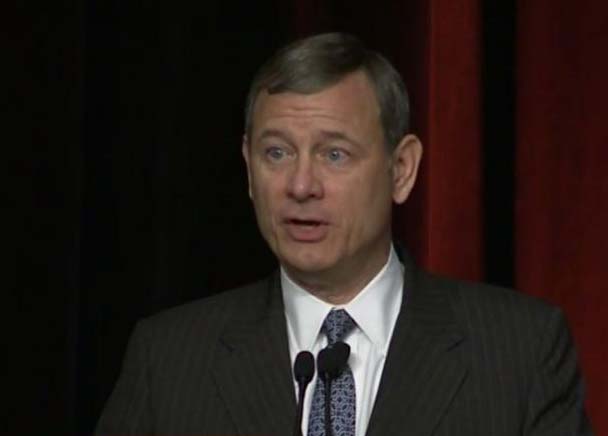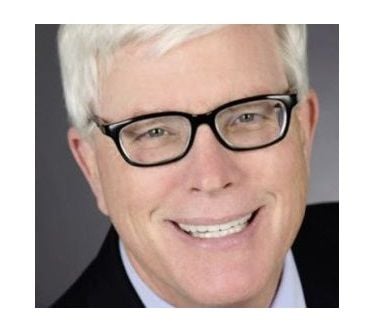
So please, Mr. President, strike a truce.
Full disclosure: Roberts is an old colleague, with whom I shared a suite in the old Executive Office Building at the beginning of President Ronald Reagan's second term. We ran together on the "White House V-Toes" in the "Nike Challenge" of that era and played on the (miserable) White House basketball team. And I am immensely grateful to him for some kindnesses along the way, especially for assuring that my workload was light in the counsel's office, as White House Counsel Fred Fielding and his deputy Dick Hauser knew to whom to assign the tough stuff.
I became adept at defending the seal of the presidency from limousine services. The future chief justice was tasked with figuring out how to make Section 3 of the 25th Amendment work when Reagan underwent surgery for colon cancer and George H.W. Bush became "acting president."
Division of labor is a very good thing, especially when a remarkable legal mind is at the call of the counsel to the president.
I am also one of the few very vocal defenders among originalists of the chief justice's decision in the 2012 case against Obamacare that earned him an unwarranted suspicion among many in the tribe of my jurisprudential leanings. Quite simply, courts ought not to strike down federal laws passed by Congress and signed by the president if there is any way to avoid doing so. The chief justice found such a path and, along the way, revivified limits to the Constitution's spending clause while cementing the border around the reach of the interstate commerce clause. Nice work, that opinion. It is a modern Marbury v. Madison and will be understood as such some decades down the line.
The chief justice's concurrence in Citizens United v. FEC is another jewel - an accessible and understandable yet comprehensive and precise statement of the stare decisis doctrine and its limits. Read it if you'd like a look ahead at where the court is going and why.
I hope the Roberts court plunges into a wholesale revamp of the jerry-rigged fire trap of establishment clause jurisprudence and that it levels the G od-awful collection of incoherent holdings I must annually pretend to teach by memorization. (A law professor can no more teach "establishment clause jurisprudence" than a math professor can teach the square root of two).
I hope as well that the court makes free-exercise rights more robust. And that it turbocharges the Fifth Amendment's long-dormant prohibition against taking property without just compensation, with the recognition that the pubic must pay property owners whenever an endangered-species listing or a critical-habitat designation devalues their land. The Supreme Court may also exile, finally, the use of race in the bestowing of benefits or infliction of penalties, and banish from its docket redistricting challenges - as redistricting belongs to the legislative and executive branches of the states, not the majority of nine unelected justices.
So we are at the dawn of a new era of an old idea: constitutional seriousness. The ground rules matter. And the Constitution's meaning, as understood at the time it was ratified or amended or interpreted before 2018, matters. The document, written mostly by farmers (smart farmers, but men steeped in the hard rules of agriculture), debated mostly by farmers and ratified mostly by farmers, is a plain document. It ought to be read plainly.
When the chief justice speaks plainly to the president or to political parties, people notice. Good. Roberts has done to Trump this week what he did to President Barack Obama in the aftermath of the 2010 State of the Union address when 44 blasted the court for its ruling in Citizens United. Roberts sallied forth then with this comment: "The image of having the members of one branch of government standing up, literally surrounding the Supreme Court, cheering and hollering while the court - according to the requirements of protocol - has to sit there expressionless, I think is very troubling." Roberts was right then. He was right Wednesday.
Now the chief justice has counterpunched the counterpunching president. Good, again. That's the job of the chief justice. He leads an independent branch of the Constitution's design, and independence is a dish best served hot. So it was.
Trump was wise not to provide a nickname for the chief justice. He'd be wiser still to leave off this particular debate. Get an attorney general the equal of the chief justice when it comes to intellect and constitutional chops and let them have at it. (Hint, hint: Judge J. Michael Luttig.) Bravo to the chief justice for calling a foul ball. We can hope the president doesn't swing on that pitch again.
(COMMENT, BELOW.)


 Contact The Editor
Contact The Editor
 Articles By This Author
Articles By This Author